
My Sky Blog – Page 1
________________________________________________________________________________________
 Starling
Starling
Latest Jupiter Image from NASA’s Juno Mission – January 16, 2017
Today, NASA released this beautiful image of crescent Jupiter and the Great Red Spot taken by the Juno spacecraft during its most recent flyby of the giant planet on December 11.
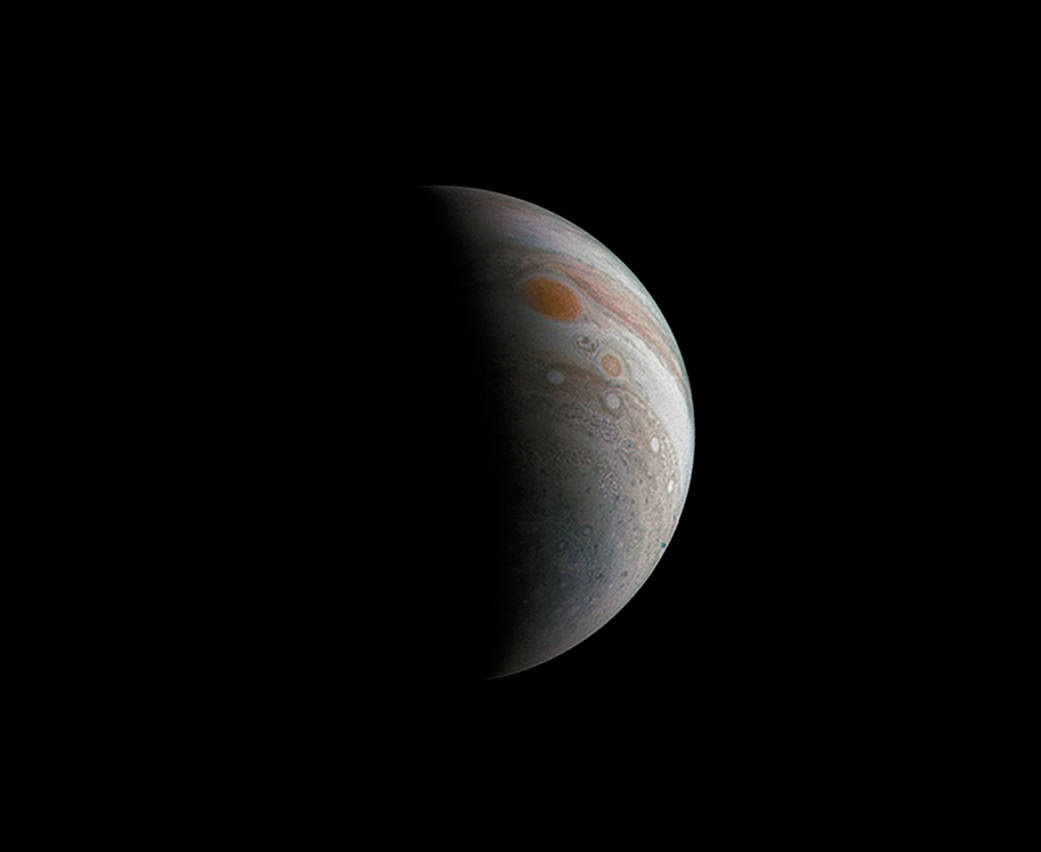
________________________________________________________________________________________
 Starling
Starling
Our New Planetary Imaging Equipment – December 27, 2016
My first semester of college at Georgia Tech has kept me very busy, but winter break has given me a chance to dive back into some amateur astronomy!
One of my passions is high resolution planetary imaging. “Aperture,” which refers to the diameter of the main optical element of a telescope, is extremely important for capturing fine detail during planetary imaging. In fact, as explained by accomplished amateur planetary astrophotographer Damian Peach here: [link to Damian Peach article], in good seeing conditions with minimal atmospheric turbulence, a telescope of average optical quality with 14 or 16 inches of aperture is able to resolve much finer planetary details than a telescope with 7 or 8 inches of aperture that has excellent optics. The simulated images in Part 5 of Mr. Peach’s article are particularly compelling, and they led us to conclude that, for planetary imaging, we would be better off acquiring a mass-produced 16 Schmidt-Cassegrain telescope of average quality than trying to capture the finest details using our excellent quality 8 inch refractor. So we acquired a used 16 inch Meade ACF Schmidt-Cassegrain on Astromart, which is pictured below.

This new SCT is now mounted in tandem with our large refractor and replaces the 12 inch f/5 Newtonian I used for my asteroid project last year. Its native f/10 focal ratio is nicely suited for planetary imaging at effective focal ratios ranging from f/15 to f/20 using a TeleVue 2x Powermate or interchangeable 1.5x and 1.75x telecentric barlows made by Harry Siebert of Siebert Optics. Our refractor’s wider field of view and excellent sharpness and contrast makes it a superior choice for many of our observing and imaging activities, but not planetary imaging.
We’ve also added an atmospheric dispersion corrector (“ADC”) to our imaging train. We chose an ADC model made by ZWO, but there are several competing brands on the market. ADCs contain a pair of adjustable prisms that correct the dispersion of different color wavelengths of light as it travels through Earth’s atmosphere. They are especially useful for improving planetary images when the target is relatively close to the horizon. A nice description of this nifty device can be found on ZWO’s website here: [link to ZWO web page describing how its ADCs unit works]. Also, here are links to three useful threads on the Cloudy Nights (“CN”) website discussing various details about the use of the ZWO ADC: [link to first CN thread], [link to second CN thread], and [link to third CN thread].
Once we got the new telescope mounted, the weather became cloudy for the rest of my winter break. As a result, we haven’t been able to do any imaging yet with our new scope. With spring semester of my freshman year of college coming up, I’ll probably have to settle for participating remotely in any planetary imaging we do over the next couple of months. We hope this new setup will bring us closer to our ambitious goal of capturing truly excellent planetary images.
________________________________________________________________________________________
 Starling
Starling
Amateur Astronomers May Have Captured the First Amateur Images of the Rings of Uranus – December 2016
A pair of accomplished Australian amateur astronomers named Phil Miles and Anthony Wesley announced on December 13 that they had successfully imaged the rings of Uranus with an Earth-based 20 inch Newtonian telescope. The website where their announcement and related photos are published can be found here: [link to Miles and Wesley announcement]. This announcement spawned spirited debate in the amateur community. Three threads on the astronomy website Cloudy Nights (“CN”) where some of these online debates played out can be found here: [link to first CN thread], here: [link to second CN thread that includes a must-see Uranus image by Darryl Milika], and here: [link to third CN thread].
The first post in the second CN link above includes a splendid photo of Uranus and five of its moons taken by Australian amateur astronomer Darryl Milika, who has expressed skepticism about whether Mr. Wesley and Mr. Miles successfully imaged the Uranian rings. Mr. Milika, whose screen name on Cloudy Nights is “Kokatha Man,” together with his imaging partner Pat Nicholas, have taken what, in my opinion, may be the best terrestrial photos ever by amateur astronomers of atmospheric features on Uranus. For his part, Mr. Miles has taken terrific pictures of Venus that were featured in this CN thread: [link to CN thread with Venus images]. Meanwhile, Mr. Miles and Mr. Wesley subsequently updated their web announcement to post images and quotes from celebrated amateur astrophotographer Damian Peach, who recently reexamined some photos of Uranus he took back in October 2015 and concluded that he also successfully imaged the rings of Uranus but failed to notice it at the time. Mr. Peach’s website where many of his extraordinary planetary images are displayed can be found here: [link to Damian Peach’s website]. Seeing these amazingly talented amateur astrophotographers debate this topic has been fascinating to watch, but not nearly as enjoyable as gazing at all the gorgeous planetary images they’ve captured.
*Note:This entry has been updated through January 16, 2017 to capture the latest developments in this discussion.
________________________________________________________________________________________
 Starling
Starling
Georgia Tech Observatory Public Night – October 13, 2016
I attended the Public Night at the Howey Observatory at Georgia Tech on Thursday, October 13. These are monthly outreach events that are open to the public. Visitors were treated to views of the Moon and Saturn. It was a very fun night, and I met a lot of great people from the Georgia Tech Astronomy Club.
________________________________________________________________________________________
 Starling
Starling
Images of Jupiter’s South Pole from NASA’s Juno Probe – 9/3/2016
NASA’s Juno probe transmitted some amazing images of Jupiter’s south polar region following its recent close approach to the gas giant.

This fantastic true color image from NASA’s Juno probe taken on August 27 shows Jupiter from below its south pole, highlighting the clouds in its violent upper atmosphere. Jupiter is so enormous that it would take nearly 11 Earth-sized planets lined up side by side to match its diameter of nearly 87,000 miles, but it completes one rotation on its axis in just 9.8 Earth hours.
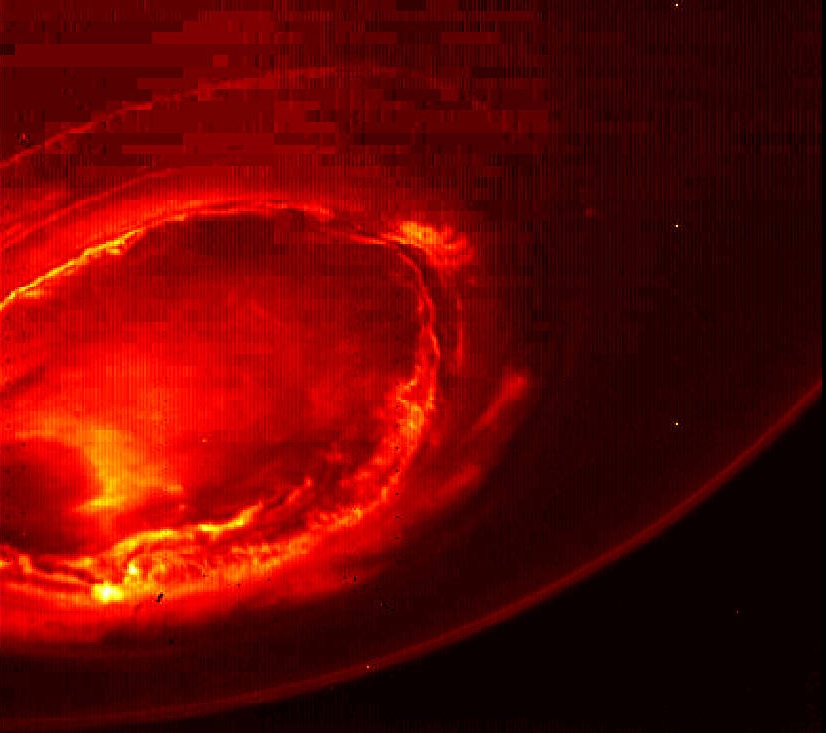
After my post from last month about auroras on Earth, I couldn’t resist posting this infrared image from NASA’s Juno probe showing a truly giant aurora near Jupiter’s south pole on August 27.
________________________________________________________________________________________
 Starling
Starling
My First Glimpse of the Northern Lights – August 2016
This month, I was thrilled to get my first glimpse of the Aurora Borealis, or “Northern Lights.” In the Northern Hemisphere, summer days are long, and the nights are short. This is increasingly true the farther north you are. I visited Iceland with a group of Georgia Tech students in August, less than two months after the summer solstice. At that time of year, sunset is after 10 p.m., and sunrise is before 5 a.m. local time. The trip centered on hiking and camping in a beautiful, remote area of southern Iceland pictured below, but several of us kept our eyes turned skyward on the handful of nights when skies were clear.
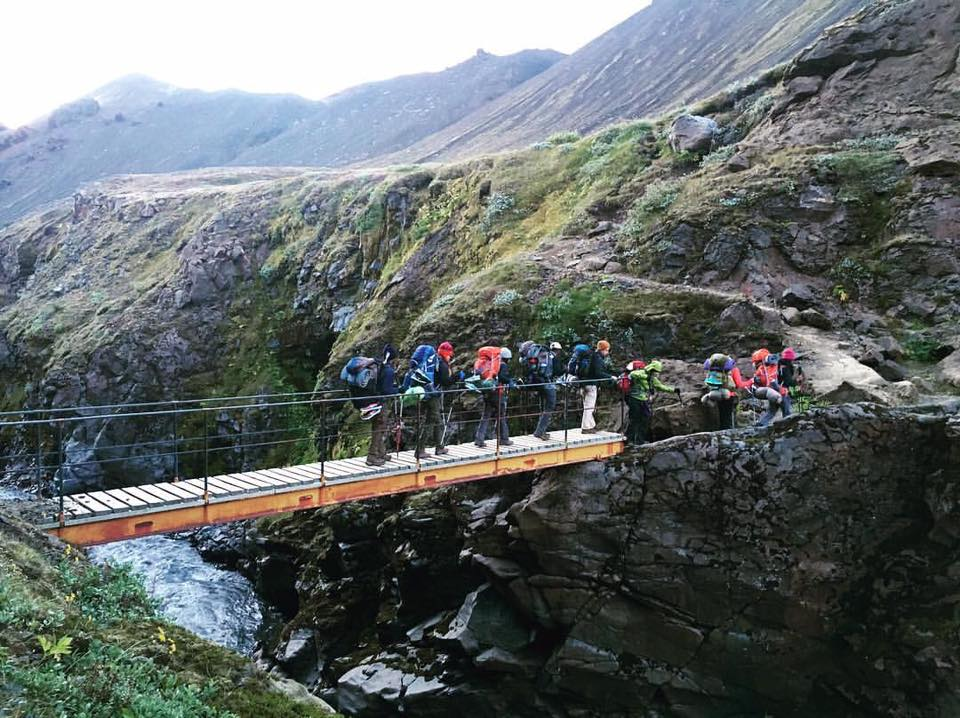
On the second night of our trek, skies were clear, and we got a definitive, if fleeting, look at an aurora. It was a whitish, very gently pulsing and undulating wispy streak in the northern sky running generally parallel with the horizon. The aurora I saw was less colorful and more faint than the spectacular auroras that are pictured on the web and on television, and it lasted less than a minute, but it was thrilling to finally see one.
Auroras occur when the solar wind interacts with the Earth’s magnetosphere under the right circumstances. A nice overview of these phenomena can be found on NASA’s website here: [link to NASA web page on auroras].
I hope I’ll have another chance to travel close enough to the poles to observe an aurora again someday soon.
______________________________________________________________________________________

Starling
The Summer Milky Way through Night Vision Gear – 7/26/2016
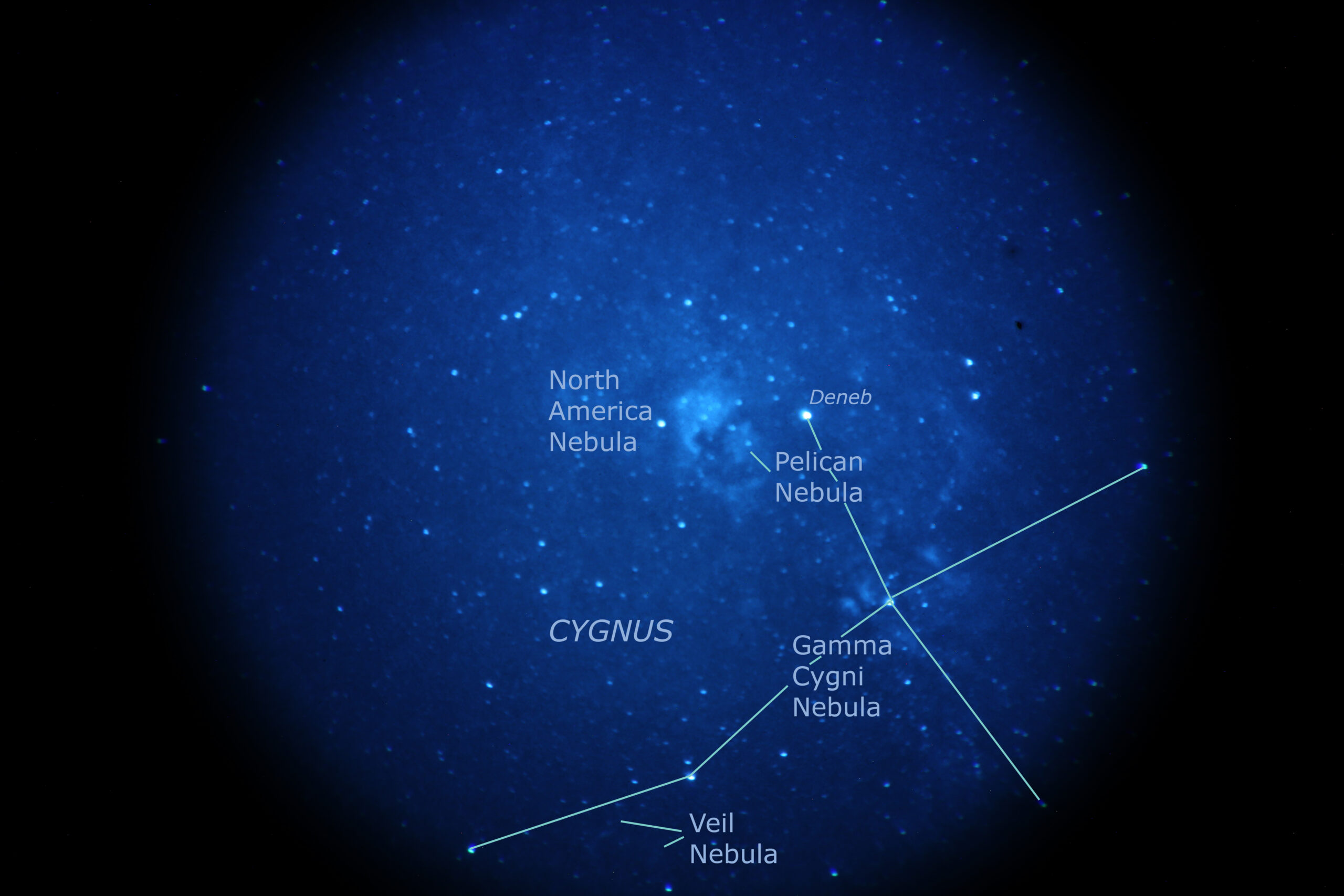 I was hoping to catch a break in the weather so I could capture some wide-field images of the summer Milky Way though our L-3 night vision image intensifier before I left for my freshman year of college. On July 23, clear skies allowed me to take several nice photos, including the one shown here of the North America Nebula, Pelican Nebula, and Gamma Cygni Nebula, with the major objects in the frame labeled.
I was hoping to catch a break in the weather so I could capture some wide-field images of the summer Milky Way though our L-3 night vision image intensifier before I left for my freshman year of college. On July 23, clear skies allowed me to take several nice photos, including the one shown here of the North America Nebula, Pelican Nebula, and Gamma Cygni Nebula, with the major objects in the frame labeled.
You can see more of our latest images taken with night vision gear, including some shots of the Sagittarius region, here.
________________________________________________________________________________________
 Starling
Starling
Juno Probe Arrives at Jupiter – 7/4/2016
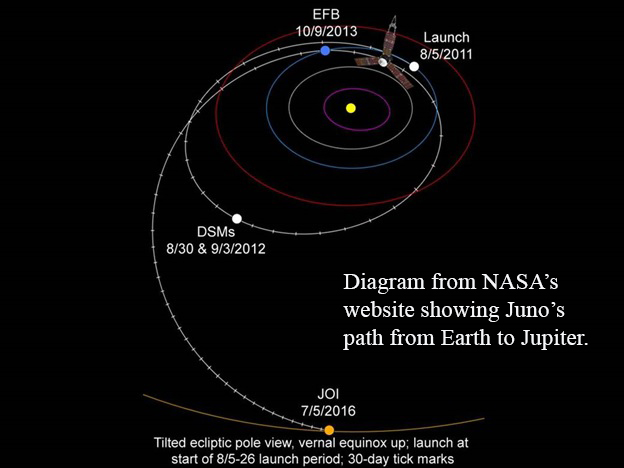 After a journey of nearly five years since its August 2011 launch, NASA’s Juno probe has arrived at Jupiter and successfully entered orbit around the giant planet. Its mission objectives include analyzing Jupiter’s magnetic and gravitational fields and atmospheric composition. Its highly elliptical orbit will bring it incredibly close — less than 1,250 miles — from the planet’s cloudtops, which will guarantee spectacular views of the upper atmosphere. The eccentricity of Juno’s orbit and the placement of its closest approaches to Jupiter in the planet’s polar areas where its magnetosphere is not as strong will help reduce the probe’s exposure to the planet’s intense radiation and hopefully allow its instruments to remain functional for the duration of its mission. NASA plans to have Juno orbit Jupiter 37 times, and the first close approach with all the probe’s instruments functioning is scheduled for August 27. I’m really looking forward to seeing images from the first close approach and reading about the data the probe collects over the next 20 months, including insights into Jupiter’s composition and evolution. Here’s a link to the NASA webpage devoted to the Juno mission, where updates and images will be posted throughout the mission: [link to NASA’s Juno mission page].
After a journey of nearly five years since its August 2011 launch, NASA’s Juno probe has arrived at Jupiter and successfully entered orbit around the giant planet. Its mission objectives include analyzing Jupiter’s magnetic and gravitational fields and atmospheric composition. Its highly elliptical orbit will bring it incredibly close — less than 1,250 miles — from the planet’s cloudtops, which will guarantee spectacular views of the upper atmosphere. The eccentricity of Juno’s orbit and the placement of its closest approaches to Jupiter in the planet’s polar areas where its magnetosphere is not as strong will help reduce the probe’s exposure to the planet’s intense radiation and hopefully allow its instruments to remain functional for the duration of its mission. NASA plans to have Juno orbit Jupiter 37 times, and the first close approach with all the probe’s instruments functioning is scheduled for August 27. I’m really looking forward to seeing images from the first close approach and reading about the data the probe collects over the next 20 months, including insights into Jupiter’s composition and evolution. Here’s a link to the NASA webpage devoted to the Juno mission, where updates and images will be posted throughout the mission: [link to NASA’s Juno mission page].
________________________________________________________________________________________
 Starling
Starling
Delta IV Launch at Cape Canaveral – 6/11/2016
In August, I’ll begin my freshman year at college, where I plan to study aerospace engineering, so I was understandably very excited to tour the Kennedy Space Center on June 10. I was hoping to catch the scheduled launch of a Delta IV Heavy rocket, which was carrying a satellite into orbit for the U.S. National Reconnaissance Office. The Delta IV Heavy has the highest lift capacity of any rocket currently in use, though its mass at launch is only about 1/4 of the mass of the Saturn V rockets that launched the Apollo missions to the moon four decades ago. Still, the launch of such a powerful launch vehicle promised to be spectacular. We were planning to view the launch from the LC-39 Observation Gantry, but unfortunately, it had to be scrubbed that day due to inclement weather. When the successful launch took place the following day, we were already on our way back home. Still, the Kennedy Space Center was amazing, and we had a great visit. Additional details about the launch, along with photos, can be found here.
_______________________________________________________________________________________
 Starling
Starling
Mars at Opposition – 5/22/2016
Here’s a photograph I took of Mars on May 22, when it was at “opposition” — that is, at a point in its orbit where it is on the opposite side of the sky from the Sun as seen from Earth. Mars is at opposition approximately once every two years, and at those times, it brightens to a point where it is nearly as bright as Jupiter. I’m experimenting with different ways to photograph the planets to get the best possible resolution, and this time, I used a Baader/Zeiss 2x barlow lens to achieve an effective focal ratio of approximately f/16. Additional details about the camera equipment and settings I use for planetary photos like this one can be found here.
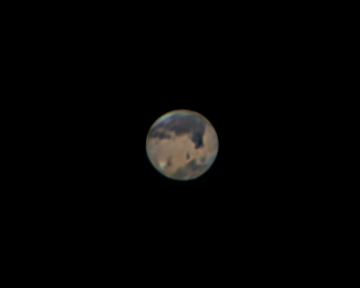
Later that same night, I took this photo of Saturn:

________________________________________________________________________________________
 Starling
Starling
New DSLR Photo of the Orion Nebula and the Running Man Nebula

Here’s an astrophoto of the Great Nebula in Orion (M42, at right) and the Running Man Nebula (NGC 1973, 1975, and 1977, at left), which form the sword of Orion the hunter, that I took in March 2016. This is a composite of four stacked 30 second exposures taken at ISO 800. Additional details about the camera setup and settings I used for this photo can be found here.
________________________________________________________________________________________
 Starling
Starling
Final Outreach Programs for this School Year
On April 24, I hosted my final outreach event of this school year — a visit by sixth grade students from a Nashville middle school to our observatory. These students built six homemade telescopes as part of their science curriculum this year, and they made a field trip out to our observatory to test them under dark skies. This was the biggest outreach event we’ve hosted to date, with over 50 attendees! I gave the students and their families a tour of our observatory and a short planetarium presentation.
Back on March 8, I hosted my second-to-last outreach program of the current school year at a local Nashville middle school.
My outreach program this year has been wonderfully gratifying. I’ve presented to over 275 elementary and middle school students and nearly 75 adults at 8 separate events where I’ve shared my love for astronomy. Additional details about these programs can be found on my Outreach page and on Page 2 of this blog. As I look forward to starting college in the fall, I’ll be looking for ways to continue sharing the wonders of the night sky with young students, and with my peers.
________________________________________________________________________________________
 Starling
Starling
My Guest Lecture on Celestial Navigation to a Vanderbilt Freshman Seminar – 3/1/2016
On March 1, I had the honor of serving as a guest lecturer at a freshman seminar at Vanderbilt University whose course title is “Antarctic Exploration, the Nature of Virtue, and the Search for Heroism in Modern Life.” My presentation was on celestial navigation techniques that were used by the Roald Amundsen and Robert F. Scott expeditions during their race to the Geographic South Pole in the early 20th Century. (Compasses point to the Earth’s magnetic poles, which are different from the geographic poles, and cannot be used at such high latitudes.) In 1911, Amundsen and Scott had to rely on sextants and artificial horizons to determine their location and to obtain the measurements they would need to prove that they had successfully reached the Geographic South Pole.
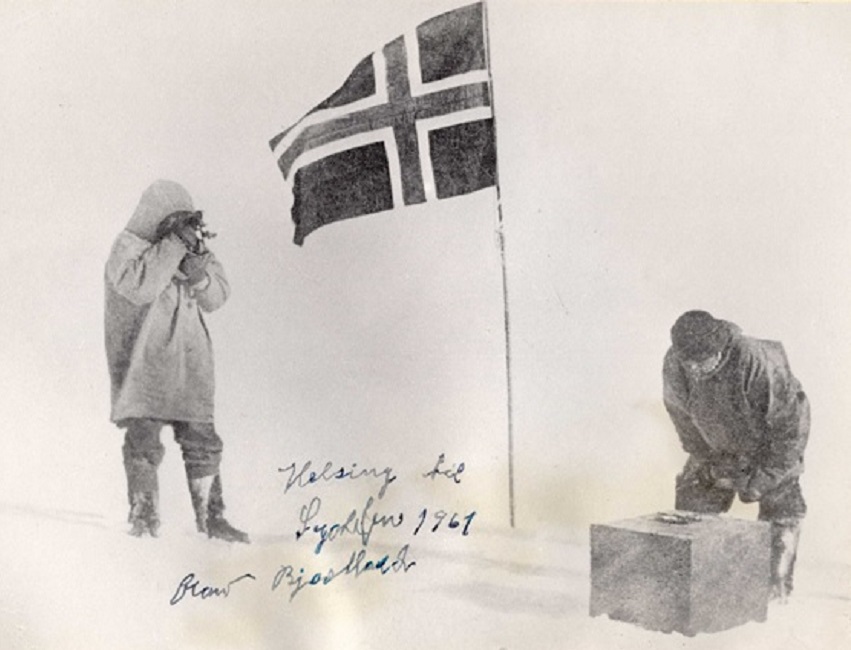
Photo of members of the Amundsen expedition using a sextant and artificial horizon at the Geographic South Pole in 1911.
During my presentation, I used my own sextant, which is a modern Astra III model, to illustrate for the class how members of those early Antarctic expeditions would have used similar instruments to find their way to the pole.
When I visited Chile this past summer, I experienced firsthand the challenges presented by not having a bright star near the south celestial pole. Living in the Northern Hemisphere with Polaris conveniently situated so close to the north celestial pole makes basic navigation and setup for astrophotography immensely easier.
While I thought it might be a bit daunting to present to a room full of college students and their two professors, I quickly relaxed and found the experience immensely rewarding!
________________________________________________________________________________________
 Starling
Starling
Jupiter Images from 2/29/2016
Weather-wise, it’s been a rather frustrating winter here in Tennessee, with only a handful of clear nights. On March 8, Jupiter will be at opposition, which is its closest position this year relative to Earth. For weeks now, I’ve been eager to capture some high power images of this gas giant with my planetary camera. Finally, everything cooperated last night. Here’s the result:

Jupiter and its moon Callisto taken on February 29, 2016. I took this photo with a TEC 200 f/8 fluorite apochromatic refractor, a ZWO ASI120MM monochrome CMOS camera, an Atik EFW2 color filter wheel with Astronomik 1.25” LRGB filters, and a Baader Planetarium Fluorite Flatfield Converter that boosted the effective focal ratio of the setup to approximately f/18.
More of my photos of Jupiter and the major planets in our solar system, as well as a discussion of my planetary image processing techniques, can be found here.
________________________________________________________________________________________
 Starling
Starling
Night Vision Astronomy! — February 25, 2016
Increasingly, amateur astronomers have been using terrestrial night vision gear to observe the night sky. When properly equipped, terrestrial night vision scopes can allow observers to see objects in real time that are far too faint to see with the naked eye or binoculars, but much too large to fit into the field of view of most telescopes that can be set up for long exposure astrophotography.
We recently acquired an “NVD Micro” night vision monocular that is set up to allow us to view the night sky at “unity,” which means at one power (1x) magnification. In other words, the monocular allows us to view an unmagnified image that’s at exactly the same scale as what we see with the naked eye.
Here’s what our observatory looks like through the NVD Micro monocular at 1x from about 100 yards away, photographed with our modded Canon 6D DSLR camera using a 50mm Canon EF f/1.8 STM lens attached directly to the camera, with the NVD Micro night vision monocular mounted in front of the 50mm lens, with an ENVIS objective lens mounted in front of the monocular, and with a 12nm Astronomik Hydrogen-Alpha filter mounted on the very front of the whole setup:

Many night vision scopes are green, but ours uses a P45 white phosphor Generation III image intensifier manufactured by L-3 to yield the bluish-white image seen above. The image above is a 30 second exposure. In real-time, the image is less blue and a bit grainier.
Check out this 30 second unguided photo of the constellation Orion using the same setup as described above, showing the Rosette Nebula in the upper left off Orion’s left shoulder, the Great Nebula in Orion, the nebulosity near the belt star Alnitak that includes the Horsehead Nebula, elusive Barnard’s Loop (first time I’d ever seen it), and the Angelfish Nebula around Orion’s head, which is also called the Meissa Ring! ALL IN ONE FRAME!!! WOW!!!
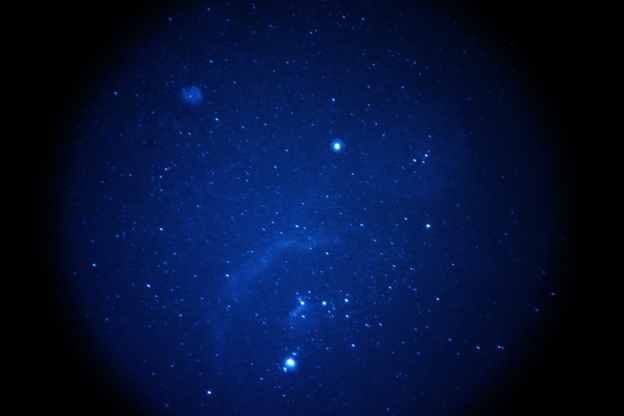
Same image as above, with constellation lines and labels added:

Now check out this 30 second unguided photo that includes the Hyades region (i.e., the “face” of Taurus the bull), the Pleaides star cluster, the California Nebula in Perseus, and the Flaming Star Nebula in Auriga (first time I’d ever seen either of those last two), with constellation lines and labels added, all in one frame!
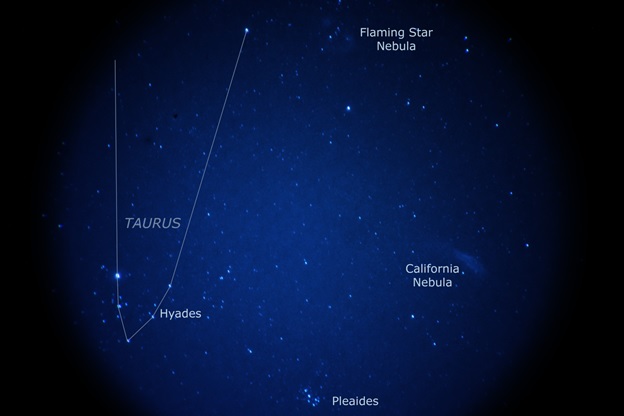
More wide-angle (1x) photos taken with our night vision setup can be found here.
We saw these magnificent vistas in real time with the lightweight handheld monocular and photographed them all in one night, in under an hour, on our first night out with this new gear! It’s that easy to use.
We are absolutely blown away by what we’re seeing with this incredible new piece of equipment that’s showing us things that are so dim and spread out that most amateur astronomers have never seen or photographed them, much less in the same frame together. I cannot wait to see the Sagittarius Arm of the Milky Way with this monocular, or to try to mount our Canon fisheye lens on it and try for wide-angle Milky Way photos without having to journey to a dark sky site.
________________________________________________________________________________________
 Starling
Starling
February 18 Elementary School Outreach Event

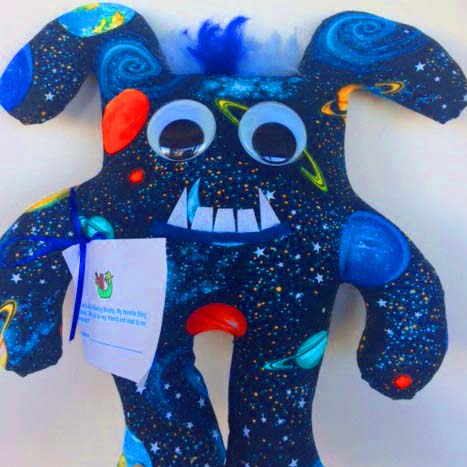 Thus far in 2016, I have presented to more than 200 students at elementary and middle schools across Middle Tennessee as part of my ongoing astronomy outreach efforts. On February 18, 2016, I had the pleasure of speaking about the wonders of astronomy to the fourth and fifth grade classes of a local school in Franklin, Tennessee. I was the school’s speaker for its science enrichment lab. The school also arranged for NASA samples of lunar specimens and meteorites to visit the school, which were very exciting to see! All of the classes I spoke to were incredibly attentive and asked insightful questions. One girl in particular asked where and how she could acquire equipment so she could get involved in amateur astronomy and astrophotography herself, and I was happy to share some recommendations with her. My Milky Way photos were a real hit. I fielded questions about the spiral shape of our Milky Way Galaxy and how it relates to the photos I’ve taken. Several of the students told me they had posters of the Milky Way in their rooms at home, so our fascinating home galaxy had already captured their imaginations. Enthusiastic students approached me after every class to ask questions. When I finished my last presentation, the school presented me with a cute Astronomy-themed stuffed animal that a former student had made. I can’t wait to continue my outreach efforts. Additional details about these programs can be found on my Outreach page and on Page 2 of this blog.
Thus far in 2016, I have presented to more than 200 students at elementary and middle schools across Middle Tennessee as part of my ongoing astronomy outreach efforts. On February 18, 2016, I had the pleasure of speaking about the wonders of astronomy to the fourth and fifth grade classes of a local school in Franklin, Tennessee. I was the school’s speaker for its science enrichment lab. The school also arranged for NASA samples of lunar specimens and meteorites to visit the school, which were very exciting to see! All of the classes I spoke to were incredibly attentive and asked insightful questions. One girl in particular asked where and how she could acquire equipment so she could get involved in amateur astronomy and astrophotography herself, and I was happy to share some recommendations with her. My Milky Way photos were a real hit. I fielded questions about the spiral shape of our Milky Way Galaxy and how it relates to the photos I’ve taken. Several of the students told me they had posters of the Milky Way in their rooms at home, so our fascinating home galaxy had already captured their imaginations. Enthusiastic students approached me after every class to ask questions. When I finished my last presentation, the school presented me with a cute Astronomy-themed stuffed animal that a former student had made. I can’t wait to continue my outreach efforts. Additional details about these programs can be found on my Outreach page and on Page 2 of this blog.
________________________________________________________________________________________
 Starling
Starling
My Proposed Light Pollution Abatement Bill
I’ve completed the draft of my bill to reduce light pollution that I plan to introduce at the upcoming 2016 Tennessee Youth Legislature event in April. A copy of my bill can be found here, and a further discussion of the growing challenge of light pollution and possible solutions appears on my “Fight Light Pollution!” page here.
This bill is not “pie-in-the-sky” idealism – it’s based on statewide legislation that was recently passed into law in New York, which in turn was inspired by model legislation created by the International Dark Sky Association called the “Energy Efficient Outdoor Lighting Act.” The main thrust of the law is to require that all new outdoor lighting fixtures be shielded so that they don’t direct light skyward. My hope is that someday, laws like this will reduce light pollution to a point where everyone will be able to see the constellations, even from urban areas, and where the Milky Way will become a common sight again, even in suburban skies.
________________________________________________________________________________________
 Starling
Starling
February 10 Outreach Program at a Nashville Area Middle School
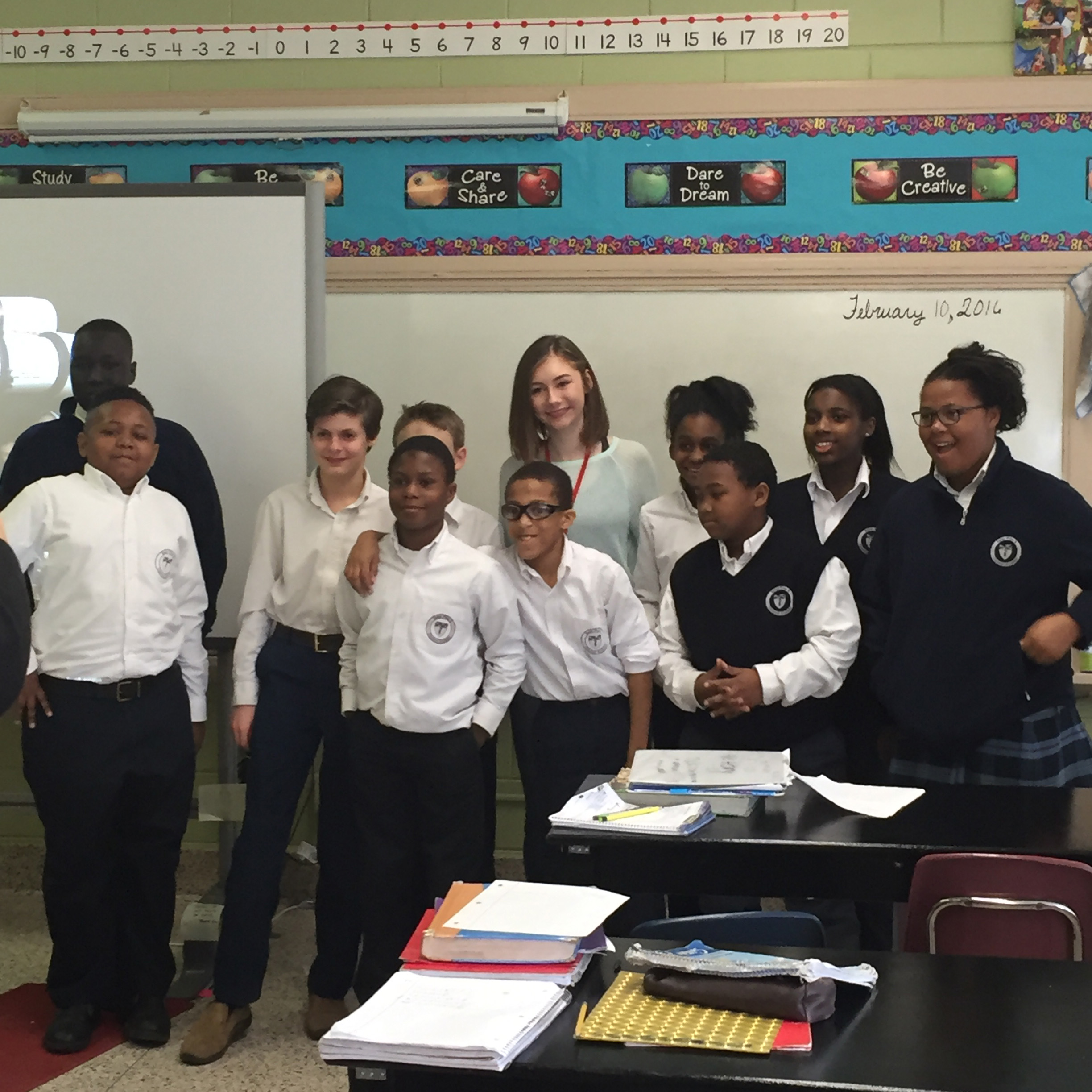
I continued my astronomy outreach efforts by presenting to the 5th, 6th, 7th, and 8th grade classes at a local middle school on February 10. The 5th and 6th graders had recently taken a field trip to Pickett State Park, an International Dark Sky Park located in Crossville, Tennessee, so they knew it was a great location to look at the stars. Many of the students asked insightful and challenging questions, such as where asteroids come from, and whether any scholarships are offered pertaining to astronomy or related fields of study.
I am very impressed that these young students are already thinking about college and possible careers in science. This was another gratifying outreach experience with a terrific group of students.

Copyright 2025 StarlingSkyBlog